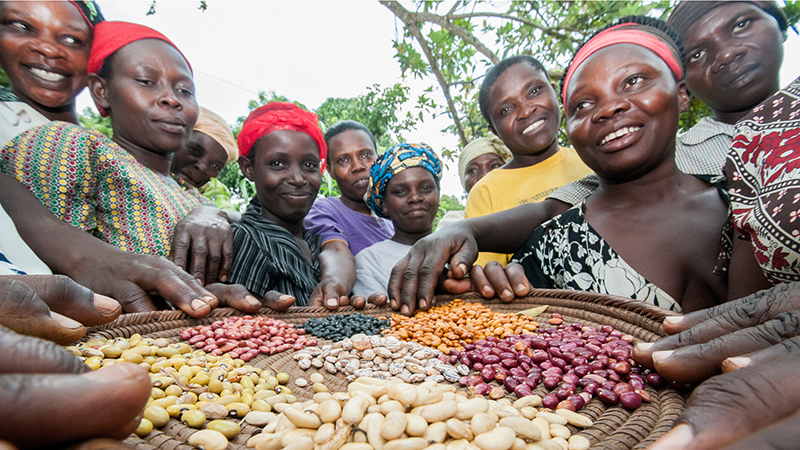Farmers in Uganda can now add a new climate-smart bean to their toolbox to respond to an increasingly hot climate and rife malnutrition.
Scientists have developed five new ‘biofortified’ varieties, enriched with iron and zinc through a natural process of selective breeding, which are able to withstand drought more effectively than conventional breeds currently on the market.
In a country where beans provide 40% of the proteins consumed by the poor and are grown by over 85% of the 18 million farmers, climate-proofing their main staple could be a life-saver for the rural population of Uganda.
Drought is currently ravaging East Africa, after an exceptionally intense and long El Niño which some observers are afraid will rapidly morph into La Niña.
Weekly briefing: Sign up for your essential climate politics update
This would be very bad news for the region, as La Niña is historically associated with severe drought.
In a scenario of such uncertainty, farmers who chose not to migrate can only try to adapt as fast as possible to avoid the worst impacts on their livelihoods.
The new beans could be a key factor in riding out the drought. Because their plants mature faster and need a lower amount of rain, they escape the worst impacts of dry spells.
They also respond better to increased temperatures, allowing farmers to keep their plantations at a lower level without moving to higher ground, where the weather is cooler.

New bean varieties each have different qualities: drought resilience; disease tolerance; high iron (Pic: CIAT/Flickr)
“We realised that because of the importance of beans in Ugandan diet, any change in their nutritional properties would have a big impact on the consumer,” said Stanley Nkalubo, programme leader at the National Crops Resources Research Institute, who took care of the breeding process and the dissemination of the seedlings.
A survey revealed that in Uganda nearly 38% of children below the age of five are short for their age and 16% are underweight as a result of malnutrition.
And research today shows that a healthy diet is not just about the amount of calories eaten, but micro-nutrients such as minerals and vitamins absorbed are as much as if not more important.
The new climate smart beans are hitting the market at the same price of their conventional counterparts, but other than being healthier they also have economic benefits.
Adapt or die: UN urges countries to build climate resilience
“Because the farmers won’t have to buy supplements, but just grow their new beans, the improved breeds are also a good investment” said Nkalubo.
What also makes for good return on investment is the capacity of the plants to guarantee yields even in case of drought, improving households’ resilience in the face of extremes.
The beans were developed in cooperation with the farmers who assessed the new varieties for preferred color, taste, cooking time and tolerance to factors such as pests or impoverished soil. Of the 13 breeds developed, only the best five made it to the field.
‘Micronutrient malnutrition, the so-called “hidden hunger”, affects more than half of the world’s population, especially women and preschool children in developing countries,’ said Clare Mukankusi, a breeder with the Pan-African Bean Research Alliance, which was also involved in the project.
With climate change claiming more and more fertile land, hidden hunger could spiral out of control in East Africa and beyond.
Report: Pace of warming threatens Africa’s new maize varieties
The Ugandan experiment is only the first step towards building food security and resilience all over East Africa.
Mukankusi explained that other countries have received the materials, including Kenya, Tanzania, Madagascar, DRC and Ethiopia, where last year’s El Niño has left a trail of famine and destruction.
But because each country has its own unique ecosystem, the seedlings that are field tested need to follow a particular pipeline before being released, depending on their performance and farmers’ preference.
Other than Uganda, Burundi has also already released three of the new breeds, and over the coming months farmers will judge if the new climate-smart beans live up to their promises, and estimate the direct effect they can have on malnutrition.
Lou Del Bello’s series of reports on Africa and climate change is funded by CDKN.
